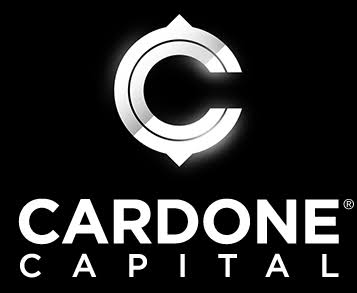Every investment has associated costs. Taxes might be the most painful of all expenses, taking the greatest bite out of your returns. The good news is that tax-efficient investing can reduce your tax burden while increasing your bottom line, regardless of whether you want to save for retirement or create cash. Tax-free investing is an excellent strategy to avoid impending tax rises. Some of your assets and income can be tax-free. This article will teach you everything you need to know about tax-friendly investments, such as those that do not tax investment gains, allow you to contribute pre-tax dollars, and allow you to make tax-free withdrawals. Here are nine tax-free tax investments in 2023 to add to your portfolio or increase your use of if you currently have them.
Best Tax-Free Investments In 2023
- Employer-Sponsored Retirement Plan (401(k)/403(b)
- Roth IRA/Traditional IRA
- HSA (Health Savings Account)
- Municipal Bonds
- Exchange-Traded Funds (ETFs)
- 529 Education Savings Plan
- US Series I Savings Bonds
- Donations/Gifts to Charities
- Exchanges 1031
The best tax-free investments in 2023 for you are determined by your present financial condition and retirement aspirations. It’s vital to remember that income levels will limit some of these investment possibilities. Other investments may be subject to AMT. Each investment should be thoroughly evaluated and assessed in light of your financial requirements. Before implementing any prospective investment options, you should get the advice of a licensed accountant or financial planner.
#1. Employer-Sponsored Retirement Plan (401(k) / 403(b))
Employer-sponsored retirement plans are excellent methods to save for the long term. Your pre-tax contributions are taken out of your paycheck, lowering your adjusted gross income (AGI). Many employers will match your payments up to a certain level and may even provide profit-sharing schemes. Earnings accumulate tax-deferred and can be withdrawn after retirement while at a lower tax bracket. There are contribution limits and penalties for early withdrawal.
Consider a Roth 401(k), which accepts after-tax contributions but provides tax-free growth and withdrawals in retirement. Although contribution limits differ between a 401(k) and a Roth 401(k), you can contribute to both. A well-diversified retirement portfolio offers more withdrawal possibilities and rewards.
Employees at charitable organizations may have access to a 403(b) retirement plan rather than a 401(k). Both use pre-tax funds and grow tax-free; but, the nonprofit employer may not provide matching contributions. In general, a 403(b) plan offers fewer administration costs. These employer-sponsored retirement plans are fantastic ways to invest tax-free and should be one of the first options investigated, especially if the employer offers price matching.
#2. Traditional IRAs vs Roth IRAs
Individual Retirement Accounts (IRAs) are another option for tax-advantaged investors because they provide tax-free growth. Traditional and Roth IRAs both enable annual contributions of up to $5,500 (under 50) and $6,500 (over 50). However, income restrictions and corporate retirement plans might have an impact on eligibility and available deductions. With a little more effort, high-income earners can still reap the benefits of these options. Traditional IRAs allow pre-tax funds to be invested tax-free and withdrawn at a lower tax rate when the investor retires. Traditional IRAs, on the other hand, include limitations such as forced distributions after a certain age and other concerns.
A Roth IRA, on the other hand, uses after-tax funds and is tax-free upon retirement, although there are income eligibility limitations. High-income people may be unable to contribute directly to a Roth IRA. This can be avoided by investing first in a standard IRA and then converting to a Roth IRA. Before you adopt this strategy, examine the tax ramifications, especially if you already have an IRA. If you have any questions concerning IRA investments, speak with a financial counselor right away.
#3. Medical Savings Account (HSA)
Tax-advantaged investors can also invest in tax-deferred and tax-free earnings on qualifying spending through a Health Savings Account (HSA). A health savings account provides tax benefits in addition to lower medical costs for upfront expenditure and saving for medical needs. Pre-tax donations are tax-deductible, while interest earned is tax-deferred. Money will continue to grow until it is spent and will not expire. Withdrawals from an HSA for qualifying medical expenses are tax-free. Consider extra HSA accounts for family members or a family HSA plan, but keep in mind the annual contribution limits.
In addition, HSA accounts are only available to people who have high-deductible insurance plans. Current trends in healthcare spending appear to favor high-deductible plans. In order to assure prudent health care spending, insurance firms and businesses are eager to pass on additional costs to plan holders. Investing in an HSA account provides numerous tax and healthcare expenditure benefits, making high-deductible health plans more appealing, especially if your employer matches contributions.
The beautiful thing about HSA funds is that if you don’t utilize them, you can roll them over into retirement and use them to pay for future healthcare bills. When combined with programs like Medicare, this can be extremely useful. What exactly is Medicare? It is a government health insurance program for persons over the age of 65.
#4. Municipal Bonds
A municipal bond, sometimes known as a “muni,” is issued by a state, city, or county to support spending. These bonds are generally safer because they are backed by government bodies, but they normally yield a lesser return. Municipal bonds are commonly referred to as triple tax-free bonds because, depending on where you live, some are exempt from federal, state, and city taxes.
However, not every muni is tax-free, so weigh your alternatives carefully. In some situations, investment in municipal bonds may trigger the Alternative Minimum Tax (AMT), which can have a significant impact on your taxes. When considering investing in a bond, carefully investigate the returns and taxes to see if the investment is worthwhile. These bonds do provide tax breaks for people in higher tax brackets, especially if they are issued by the city or state where you live. However, in some situations, a taxable account may provide superior after-tax returns than a tax-free municipal bond. Before you automatically forego taxable investments in favor of tax-free alternatives, consult with a professional to ensure you are making sound investment investments.
#5. Tax-Free Exchange-Traded Funds (ETFs)
You should definitely consider exchange-traded funds if you want to invest tax-efficiently (ETFs). ETFs typically have lower expenses than mutual funds and provide greater flexibility. The tax advantage is determined by the type of bonds held by the ETF. For example, while U.S. government bond ETFs are tax-free in their home country, they are subject to federal tax. Municipal bond ETFs, on the other hand, may be free from federal, state, and local taxes. There are numerous ETFs available, and many providers or exchanges provide them. The best ETFs for you are determined by your age, income level, retirement goals, risk tolerance, and other criteria. To identify the best investments for your financial situation and eligibility, consult with a tax advisor.
#6. 529 Education Savings Plan
A 529 college plan is another worthwhile investment. This helps you to save money for school and higher education. Contributions are not deductible and are made after-tax, but some cumulative tax is deferred. Furthermore, payouts for qualified college or higher education costs may be tax-free at the federal level but not in all states. Before forming a 529, examine the advantages according to your region and intended use. Non-qualified expenses are subject to income tax as well as a penalty on earnings. Without the penalties, money invested in a 529 plan is less liquid than other investments. However, if the intended recipient decides not to attend college, you can change the beneficiary of a 529 plan. You can, for example, shift the beneficiary to yourself or another dependent if desired.
#7. US Series I Savings Bond
Series I savings bonds in the United States provide another investment alternative, albeit they may not be as profitable as other tax-free investment programs. While you are exempt from state and local taxes, interest income is subject to federal tax. However, depending on your income and other restrictions, you or an eligible dependent may be able to use these bonds to pay for some school expenses tax-free.
#8. Donations to Charities
Another way to invest tax-free is to make charitable contributions. You can avoid capital gains tax by donating stocks to a charity. When itemizing your taxes, charitable contributions can also give tax deductions. This strategy should be well researched because it has limitations, time constraints, and drawbacks. However, in other cases, particularly for high-income individuals, it may be advantageous.
Another alternative is to make a monetary present to a dependent. Certain investments are tax-free or subject to a lower tax level under the Uniform Gift to Minors Act (UGMA). It is vital to note that the size of the gift may have an impact on the child’s future financial aid eligibility. In addition, there are complicated gift tax laws to consider. While this strategy may not be as tax effective as the others suggested, it is worth investigating further.
#9. Exchange 1031
1031 exchanges are a type of tax-free investing in which an investment is changed without paying capital gains taxes. This approach is commonly used in real estate when one property investment is replaced with another and profits are reinvested. Because there are no limits on the number of 1031 exchanges that can be undertaken, the capital gains tax can be delayed to a later date. However, there are restrictions on the types of investments that can be traded. Taxes are also owed for variances in investment investments. Because this strategy can lead to several issues, it is strongly advised that you get experienced financial guidance before reinvesting.
Where Do Wealthy People Invest?
Many millionaires and billionaires gained their wealth, at least in part, through stock market investments or ownership of businesses they founded or ran.
What Kind of Revenue Gets Taxed First?
In the order of taxes, non-savings income is the first to be taxed through the bands. Employment income, self-employment profits, pension income, rental income, and trust income are all included in this. The following tax rates apply to non-savings income that exceeds the personal allowance: primary rate 20%
What Is the Best Approach to Pay Yourself So as to Minimize Taxes?
A salary and dividends are the most tax-effective ways to pay yourself as a business owner. This will enable you to pay taxes on the salary and deduct it from your business’s income. You must pay taxes on your business’s profit if you do not pay yourself a wage.
Conclusion
Tax-free investments can reduce your tax bill and allow you to keep more of your earnings. Financial investing entails both risks and rewards, so determining the finest or most efficient investing strategy for your personal needs is critical. If you are considering tax-free investing, do your homework or consult with a tax specialist. For investors who adopt suitable tax planning tactics, there are numerous tax-free investment possibilities accessible. Some of these alternatives offer greater benefits and comprehensive tax benefits than others.
Begin with the most advantageous options, such as your employer’s 401(k) or 403(b) retirement plans, or an IRA/Roth IRA. You can also invest tax-free by opening an HSA account or purchasing tax-free municipal bonds. Investing in tax-free ETFs is another alternative. It may be worthwhile in some instances to explore a 529 education plan for yourself or a qualified dependent. In addition, US Series I savings bonds, charity contributions, and 1031 exchanges all provide some type of tax break. Consider the alternative minimum tax (AMT), which can have a significant impact on your taxes if applicable.
Tax-Free Investments FAQs
How can I grow my money tax free?
The Roth is a retirement plan that permits your contributions to grow tax-free as long as you make no qualifying withdrawals. There are no age restrictions for Roth contributions, so if you’re 75 and wish to keep contributing, you can.
Is mutual fund tax free?
Dividends paid by equities mutual funds are tax-free in the hands of the investor, but the AMC imposes an 11.648 percent dividend distribution tax (DDT). Tax on debt mutual funds – For short-term capital gains in debt funds, the minimum holding period is three years.
What is a TFRA tax free account?
A Tax-Free Retirement Account, often known as a TFRA, is retirement savings account that functions similarly to a Roth IRA. Contributions made to the account must be taxed. These funds’ growth is not taxed. A tax-free retirement account, unlike a Roth IRA, does not have IRS-mandated withdrawal restrictions.
- HSA Investment: Best Options and Tax Benefits
- Best HSA Accounts 2023: Comparison of Fees & Investment Options
- Lively HSA Review: Investment Options and fees
- Health Savings Account Rules (HSA Rules) 2023 (Updated!)
- Health Savings Account (HSA): Contributions and Eligibility Requirements 2023
- TAX-FREE RETIREMENT ACCOUNT: Requirements and How It Works






